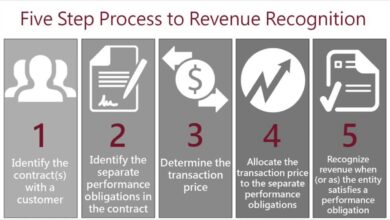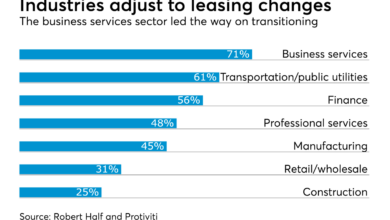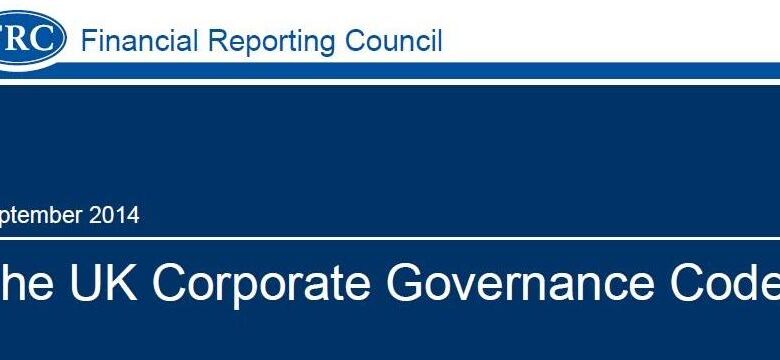
UK FRC Guidance on Cash Flow Liquidity Disclosures
UK FRC guidance on cash flow liquidity disclosures provides crucial insights into how companies should present their financial health. This comprehensive guide covers everything from understanding cash flow statements and liquidity ratios to specific disclosure requirements and compliant examples. It’s a must-read for anyone navigating the complexities of financial reporting, ensuring transparency and comparability across different entities.
This guide dives deep into the specifics, from the core principles to practical applications. It will equip you with the knowledge needed to interpret and apply the guidance effectively. The guidance details the essential elements for crafting clear and accurate disclosures about a company’s cash flow and liquidity position, aligning with the latest accounting standards.
Introduction to UK FRC Guidance on Cash Flow Liquidity Disclosures
The UK Financial Reporting Council (FRC) has issued guidance on cash flow and liquidity disclosures, aiming to enhance transparency and comparability in financial reporting. This guidance provides a framework for companies to present their cash flow and liquidity positions in a clear and understandable manner, enabling investors and other stakeholders to assess the financial health and resilience of the reporting entity.This guidance is crucial for stakeholders to make informed decisions about investments, lending, and other financial interactions with the entity.
The FRC’s focus on clarity and consistency in these disclosures is a vital step towards improving the overall quality of financial reporting in the UK.
Key Objectives and Aims of the Guidance
The guidance aims to ensure that disclosures about cash flow and liquidity are:
- Transparent: Providing stakeholders with sufficient information to understand the entity’s ability to meet its short-term and long-term obligations.
- Consistent: Promoting a common understanding of how different entities present cash flow and liquidity information.
- Comparable: Allowing stakeholders to compare the cash flow and liquidity positions of different entities within the same industry or sector.
- Relevant: Highlighting the key factors affecting the entity’s cash flow and liquidity, including potential risks and opportunities.
Scope of the Guidance
This guidance applies to all UK companies that are required to prepare financial statements in accordance with UK Generally Accepted Accounting Practice (GAAP). This includes, but is not limited to, public companies, private companies, and other organizations required to report financial data to external stakeholders.
Key Areas Covered by the Guidance
The guidance addresses several key areas, ensuring a comprehensive understanding of the entity’s cash flow and liquidity.
Discover the crucial elements that make global cfo survey rebuild revenue streams the top choice.
| Area | Description |
|---|---|
| Cash Flow Statements | Provides detailed guidance on the format and content of cash flow statements, including operating, investing, and financing activities. |
| Liquidity Risk Management | Explains the importance of disclosing the entity’s approach to managing its liquidity risks, including potential funding constraints and the impact of changing market conditions. |
| Contingent Liabilities | Details how contingent liabilities that could affect cash flow and liquidity should be disclosed. This includes potential legal claims, guarantees, and other obligations. |
| Debt Covenants and Other Financial Obligations | Artikels the importance of disclosing any debt covenants, financial guarantees, or other contractual agreements that could constrain the entity’s ability to manage its cash flow. |
| Financial Instruments | Details the disclosure requirements for financial instruments, including derivatives, loans, and investments, to provide a complete picture of the entity’s financial position and potential liquidity exposure. |
Understanding Cash Flow Statements
Cash flow statements are crucial for evaluating a company’s liquidity, revealing the actual movement of cash into and out of the business. They offer a different perspective from profit and loss statements, focusing on the cash generated and used by the company over a specific period. Understanding these statements is vital for investors, creditors, and management alike, as they provide insights into the company’s ability to meet its short-term obligations and fund future growth.
Significance in Assessing Liquidity, Uk frc guidance on cash flow liquidity disclosures
Cash flow statements provide a direct measure of a company’s ability to generate cash. This is critical for liquidity assessment, as it shows the company’s capacity to pay its bills, cover unexpected expenses, and fund operations. A positive cash flow indicates a company can meet its obligations, while a negative cash flow signals potential problems. This assessment is vital for investors and creditors, allowing them to evaluate the company’s financial health and potential risks.
Components of a Cash Flow Statement
A cash flow statement typically comprises three main activities: operating, investing, and financing. Each activity provides insights into different aspects of the company’s cash flow. The FRC guidance emphasizes the need for clear and transparent disclosure of these activities, enabling stakeholders to assess the company’s financial position and performance accurately.
- Operating Activities: This section details the cash flows generated from the core business operations. Examples include cash received from sales, cash paid for expenses (salaries, rent, utilities), and cash paid for taxes. The FRC guidance stresses the importance of accurately reporting these transactions to reflect the true cash position stemming from day-to-day business activities.
- Investing Activities: This section covers cash flows related to the acquisition and disposal of long-term assets, such as property, plant, and equipment (PP&E), and investments in other companies. Examples include capital expenditures (CAPEX) and proceeds from the sale of assets. The guidance highlights the need for transparency in reporting these activities, as they significantly impact a company’s long-term financial position.
- Financing Activities: This section reflects cash flows from obtaining and repaying capital. This includes activities like issuing or repurchasing shares, borrowing or repaying loans, and paying dividends. The FRC guidance emphasizes the importance of disclosing these activities to reveal the company’s funding sources and repayment obligations.
Relevance to Liquidity
The cash flow from each activity type has a specific impact on liquidity. Cash flow from operating activities directly relates to the company’s ability to meet its short-term obligations. Investing activities can influence long-term liquidity if large capital expenditures deplete cash reserves. Financing activities, such as debt issuance, can improve liquidity in the short term, while dividend payments decrease it.
- Operating Activities: Positive cash flow from operations suggests the company can meet short-term obligations without external funding. A significant negative flow raises concerns about the company’s ability to sustain its operations.
- Investing Activities: Large capital expenditures can strain short-term liquidity, while proceeds from asset sales can bolster it. The FRC guidelines emphasize disclosing these activities for a comprehensive assessment.
- Financing Activities: Borrowing funds can enhance short-term liquidity, but increasing debt can also raise concerns if the company struggles to repay it. The FRC stresses the need for clarity on the company’s debt structure and repayment schedule.
Importance of Clear Presentation
Clear and transparent presentation of cash flow information is paramount for effective liquidity assessment. The FRC guidance highlights the importance of using consistent accounting policies, providing sufficient disclosures, and following recognized accounting standards. This allows stakeholders to interpret the data accurately and make informed decisions.
Browse the multiple elements of cima ethics confidentiality rules to gain a more broad understanding.
Cash Flow vs. Accrual Accounting
| Item | Cash Flow | Accrual |
|---|---|---|
| Recognition of Revenue | Recognized when cash is received | Recognized when earned, regardless of cash receipt |
| Recognition of Expenses | Recognized when cash is paid | Recognized when incurred, regardless of cash payment |
| Liquidity Assessment | Direct measure of available cash | Indirect measure based on revenue and expenses |
| Impact of Non-Cash Transactions | Excludes non-cash transactions | Includes non-cash transactions |
| Time Horizon | Focuses on the immediate availability of cash | Focuses on future revenue and expense patterns |
The table illustrates the fundamental difference between cash flow and accrual accounting. Cash flow accounting provides a more immediate view of a company’s liquidity position, while accrual accounting offers a broader perspective on its profitability and resource allocation.
Liquidity Ratios and Metrics: Uk Frc Guidance On Cash Flow Liquidity Disclosures
Understanding a company’s ability to meet its short-term obligations is crucial for investors and stakeholders. Liquidity ratios provide valuable insights into this capacity. The UK FRC guidance emphasizes the importance of transparent and accurate disclosure of these ratios, allowing for a more informed assessment of a company’s financial health.
Key Liquidity Ratios
Liquidity ratios are financial metrics used to evaluate a company’s ability to pay off its short-term debts. These ratios are essential for assessing the company’s immediate financial strength and its potential risk of defaulting on short-term obligations. A key aspect of the UK FRC guidance is that companies must clearly and comprehensively present these ratios to allow for informed decision-making by users of financial statements.
Current Ratio
The current ratio measures a company’s ability to pay its short-term liabilities with its short-term assets. A higher current ratio generally indicates a stronger liquidity position.
Current Ratio = Current Assets / Current Liabilities
For example, if a company has £100,000 in current assets and £50,000 in current liabilities, its current ratio is 2.0 (100,000/50,000). This suggests a healthy ability to meet short-term obligations. The FRC guidance encourages companies to provide context regarding the industry benchmarks and historical trends for this ratio.
Quick Ratio (Acid-Test Ratio)
The quick ratio, a more stringent measure of liquidity, focuses on the company’s most liquid assets. It excludes inventory, which can be less easily converted into cash.
Quick Ratio = (Current Assets – Inventory) / Current Liabilities
If the same company from the previous example has £20,000 in inventory, its quick ratio would be 1.6 (80,000/50,000). This ratio provides a clearer picture of the company’s ability to meet its short-term obligations without relying on the sale of less liquid assets. The FRC guidance stresses the importance of explaining any significant changes in this ratio over time.
Cash Ratio
The cash ratio is the most conservative liquidity ratio. It focuses solely on a company’s most readily available assets – cash and cash equivalents.
Cash Ratio = (Cash and Cash Equivalents) / Current Liabilities
This ratio highlights a company’s ability to meet its short-term obligations using only its most liquid assets. If the company in the example held £30,000 in cash and cash equivalents, its cash ratio would be 0.6 (30,000/50,000). The FRC guidance emphasizes the significance of this ratio for assessing a company’s immediate financial solvency.
Comparison of Liquidity Ratios
| Ratio | Formula | Interpretation | FRC Guidance Impact |
|---|---|---|---|
| Current Ratio | Current Assets / Current Liabilities | Measures overall short-term liquidity | Requires context on industry benchmarks and historical trends. |
| Quick Ratio | (Current Assets – Inventory) / Current Liabilities | Measures short-term liquidity excluding inventory | Emphasis on explaining significant changes. |
| Cash Ratio | (Cash and Cash Equivalents) / Current Liabilities | Measures most immediate liquidity | Highlights the company’s ability to meet immediate obligations. |
The table above summarizes the key liquidity ratios, their formulas, and how the UK FRC guidance affects their presentation and interpretation.
Disclosure Requirements for Liquidity

The UK Financial Reporting Council (FRC) guidance on cash flow and liquidity disclosures is crucial for investors and stakeholders to assess a company’s ability to meet its short-term obligations. Clear and comprehensive disclosures empower them to make informed decisions regarding investments and creditworthiness. This section delves into the specific requirements for disclosing liquidity, providing examples, and highlighting the importance of context.The FRC guidance emphasizes the need for companies to provide sufficient information about their liquidity position, ensuring comparability across different businesses.
This transparency allows stakeholders to understand how companies manage their short-term resources and evaluate their potential risk profile. The disclosures should be presented in a way that is easily understandable, avoiding overly technical jargon.
Specific Disclosure Requirements
The FRC guidance mandates disclosures that cover a range of factors affecting a company’s liquidity. These go beyond simply stating cash balances and encompass a broader picture of short-term resources. Companies need to provide insights into their short-term funding sources and the potential risks associated with their cash flow patterns.
Examples of Disclosed Information
Companies must detail their expected cash inflows and outflows over the next 12 months. This includes projected revenues, operating expenses, capital expenditures, and debt repayments. Specific examples include details on short-term debt obligations, lines of credit, and available cash balances. Furthermore, information about the company’s ability to generate cash from operations is crucial. This could include metrics like the operating cash flow to current liabilities ratio, which provides insights into the company’s ability to meet its current obligations.
Details about significant events that could impact liquidity, such as pending legal proceedings or potential contract terminations, should also be included. Illustrative examples include: a company announcing a large capital expenditure project, or a significant delay in receiving a large invoice, which will affect their liquidity.
Importance of Context and Explanations
Providing sufficient context and explanations for the disclosed information is paramount. Investors need to understand the reasons behind the company’s liquidity position, rather than just the numbers themselves. Explanations should address potential risks and uncertainties, allowing investors to form a more comprehensive understanding. For instance, if a company reports a decline in cash flow, the disclosure should explain the reasons behind this decline, such as an increase in operating expenses or delays in collections.
This enables a more informed assessment of the company’s financial health.
Ensuring Comparability Across Companies
The FRC guidance stresses the importance of consistent disclosure practices. This promotes comparability across different companies, facilitating easier analysis by investors. Consistent formats and terminology ensure that stakeholders can compare the liquidity positions of various organizations fairly and effectively. By adhering to the standardized requirements, companies ensure that their disclosures are easily comparable to those of their peers, allowing for a more effective evaluation of their relative financial strength.
Summary of Disclosure Requirements
| Entity Type | Required Disclosures |
|---|---|
| Public Limited Companies | Comprehensive details on cash flow, liquidity ratios, and potential risks. Details about expected cash inflows/outflows, short-term funding sources, and available cash balances. Emphasis on context and explanation for any deviations from expectations. |
| Other Entities (e.g., private companies, charities) | Tailored disclosures based on their specific circumstances. Information should be relevant to their operations and the assessment of their short-term obligations. Should highlight significant factors that could impact liquidity, including material uncertainties or risks. |
Illustrative Examples of Compliant Disclosures
Navigating the intricacies of cash flow and liquidity disclosures can feel daunting. However, with clear examples and a structured approach, companies can effectively meet the requirements of the UK FRC guidance, ensuring transparency and investor confidence. This section provides practical demonstrations of compliant disclosures, showcasing how to present liquidity information concisely and meaningfully.
Cash Flow Statement Disclosures
Understanding how cash flow statements can be used to illustrate liquidity is crucial. Companies should present their cash flows from operating, investing, and financing activities in a clear and easily understandable format. This allows investors to assess the company’s ability to generate cash from its core business operations and how it manages its external investments and financing.
- Example 1: A company operating in the retail sector might disclose details on the timing of cash inflows from customer payments. For instance, “Cash collections from customers are predominantly received within 30 days of the sale, with a small portion collected after 60 days.” This level of detail provides a clear picture of the company’s short-term cash flow cycle.
- Example 2: A company with significant capital expenditure might present detailed information on capital expenditure projects. This could include “Capital expenditure for the expansion of production facilities amounted to £5 million in the current financial year, primarily focused on enhancing production capacity and achieving economies of scale. The impact of this expenditure on the company’s operating cash flows is anticipated to be positive in the coming years.” This explanation clarifies the purpose and anticipated impact of investments.
Liquidity Ratio and Metric Disclosures
Liquidity ratios provide key insights into a company’s ability to meet its short-term obligations. Comprehensive disclosure of these ratios and their context is vital.
- Example 1: A company might present its current ratio, calculated as current assets divided by current liabilities, alongside an explanation of its implications. For instance, “The current ratio remained at 1.5 in the current financial year, demonstrating a satisfactory capacity to meet short-term obligations. The company’s management believes this ratio provides sufficient financial flexibility for its current operations.” This example demonstrates a clear presentation of the ratio and its significance.
- Example 2: A company facing challenges in its working capital cycle might disclose the number of days of inventory held. “The average inventory days held increased to 70 days in the current year, compared to 60 days in the previous year. Management is actively implementing strategies to optimize inventory management, including streamlining procurement processes and enhancing inventory tracking systems, to mitigate the impact on liquidity.” This detailed explanation clearly communicates the potential risks and proactive steps being taken.
Illustrative Financial Statements and Notes
Financial statements and accompanying notes are crucial for providing context to liquidity disclosures.
- Example: A company might include a detailed breakdown of its current assets (e.g., cash, accounts receivable, inventory) and current liabilities (e.g., accounts payable, short-term debt) within its balance sheet. The accompanying notes should explain the composition of these figures and the methods used to value them, ensuring clarity and accuracy. This ensures the disclosure is not just a list of figures but a comprehensive explanation of their relevance.
Comparative Analysis of Compliant Disclosures
A table illustrating compliant disclosures from different companies can highlight varying approaches and the importance of providing context.
For descriptions on additional topics like how to clearly communicate feedback and expectations, please visit the available how to clearly communicate feedback and expectations.
| Company | Disclosure Example |
|---|---|
| Company A | Detailed breakdown of cash flow from operating activities, including specific segments and key drivers. Clear presentation of liquidity ratios with explanations. |
| Company B | Emphasis on the impact of seasonal factors on cash flows and liquidity ratios. Explanation of management’s actions to mitigate potential risks. |
| Company C | Focus on the company’s ability to generate cash from its core operations and its investment strategies. Clear articulation of the relationship between cash flow and future liquidity. |
Impact of Changes in Accounting Standards
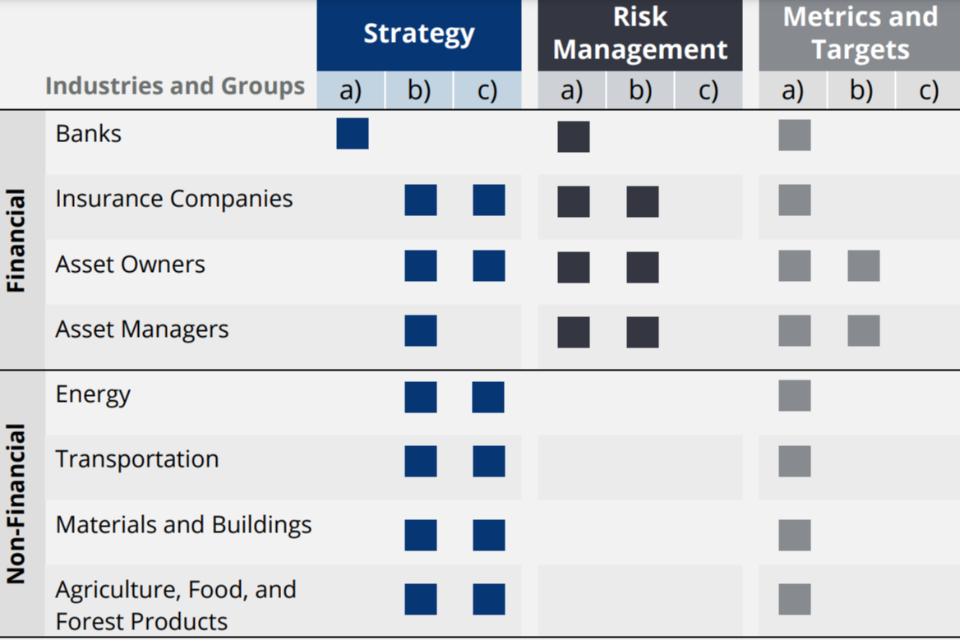
Recent revisions to accounting standards significantly impact the disclosure requirements for cash flow and liquidity. These updates often reflect evolving economic realities and investor needs, aiming to provide a clearer and more comprehensive picture of a company’s financial health. Understanding these changes is crucial for both preparers and users of financial statements.
Impact on Disclosure Requirements
Changes in accounting standards, such as new interpretations of existing standards or entirely new pronouncements, frequently alter the specific details demanded in cash flow and liquidity disclosures. These alterations might involve adjustments to the presentation format, the inclusion of new metrics, or a shift in the level of detail required for specific items. For example, a new standard might necessitate a more detailed breakdown of cash flows from operating activities, or the introduction of a new liquidity ratio that investors now demand.
The goal is always to improve the quality and usefulness of financial reporting.
Implications for Different Accounting Periods
The impact of new accounting standards varies depending on the reporting period. For periods that pre-date the effective date of the standard, companies are typically required to apply the new standards retrospectively, meaning they need to restate prior periods’ financial statements to align with the new rules. For periods beginning after the effective date, companies must apply the new standards prospectively, meaning they apply the updated rules only to the current and subsequent reporting periods.
This can lead to discrepancies in the comparability of financial data across different reporting periods.
Adaptation to Evolving Accounting Practices
The FRC guidance on cash flow and liquidity disclosures aims to adapt to evolving accounting practices. This adaptability ensures the guidance remains relevant and useful for companies reporting under the evolving standards. This includes addressing new standards and interpretations, enabling stakeholders to effectively assess a company’s liquidity and cash flow position. The guidance must maintain its consistency with the broader regulatory environment, including changes in the financial reporting framework.
Illustrative Examples of Compliant Disclosures
Illustrative examples of compliant disclosures under the updated standards would show how companies are adapting to the new requirements. For instance, a company might provide more detailed information on specific types of financing activities, or a new liquidity ratio calculation that highlights the impact of a new accounting policy. The examples would demonstrate the application of the new standard to various financial scenarios, offering clarity and a practical guide for companies to follow.
Summary of Implications of Recent Amendments and Pronouncements
Recent amendments and pronouncements to accounting standards, such as changes in IFRS or US GAAP, frequently require adjustments to cash flow and liquidity disclosures. These adjustments can involve the introduction of new metrics, the need for additional disclosures, or modifications in the format of the presentation. The overall aim is to enhance transparency and comparability in financial reporting.
The FRC guidance must remain aligned with these amendments to maintain consistency and effectiveness.
Evolution of Disclosure Requirements Over Time
| Year | Disclosure Requirements |
|---|---|
| 2020 | Emphasis on basic cash flow and liquidity information. |
| 2022 | Introduction of new liquidity ratios and detailed operating activities breakdown. |
| 2024 | Requirement for retrospective adjustments for companies applying new standards to prior periods. Increased focus on disclosures related to specific risks. |
This table demonstrates how the requirements for cash flow and liquidity disclosures have evolved over time, highlighting the increasing sophistication and detail expected in financial reporting. This is indicative of the ever-changing landscape of financial reporting standards.
Key Considerations for Preparing Disclosures
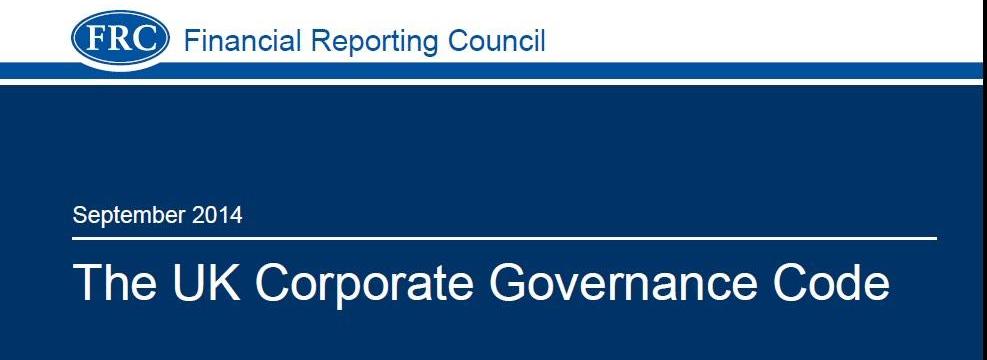
Navigating the complexities of cash flow and liquidity disclosures requires careful attention to detail and a deep understanding of the UK FRC’s guidance. This section dives into the crucial factors companies need to consider when preparing these disclosures, emphasizing the importance of professional judgment and how to handle potential challenges.Applying the FRC guidance effectively involves more than simply following the rules; it requires a nuanced understanding of the company’s specific circumstances and industry context.
Companies must carefully evaluate their financial position, projected future performance, and any potential risks that could impact their cash flow and liquidity.
Importance of Professional Judgment
Professional judgment is paramount in applying the UK FRC’s guidance on cash flow and liquidity disclosures. The guidance provides a framework, but specific circumstances can necessitate adjustments and interpretations. A company’s unique financial position, industry dynamics, and strategic objectives often influence the best approach to presenting information. A company operating in a rapidly evolving market may require more detailed disclosures regarding its liquidity projections than a company in a stable industry.
Examples of Situations Requiring Professional Judgment
Numerous situations necessitate professional judgment when preparing cash flow and liquidity disclosures. For instance, a company experiencing temporary disruptions in its supply chain might need to elaborate on the potential impact on its short-term cash flow. Similarly, a company facing significant investment opportunities or restructuring activities must carefully evaluate and disclose the implications for its liquidity position. A company expecting a substantial increase in receivables needs to account for the effect on its liquidity.
This requires considering the company’s collection history and any changes in customer payment terms.
Addressing Complexities in Presenting Information
Presenting complex cash flow and liquidity information requires careful structuring and clear communication. Aggregated data should be presented in a way that highlights key trends and risks. Disclosing both historical data and forward-looking information is often necessary to provide a comprehensive picture of the company’s financial position. Where appropriate, supplemental schedules or notes can further explain the key assumptions underlying the disclosures, such as growth forecasts or industry benchmarks.
Potential Challenges and Solutions
- Challenge: Understanding the interconnectedness of various financial statements and their impact on cash flow and liquidity.
- Potential Solution: Thorough analysis of the income statement, balance sheet, and statement of cash flows, ensuring a cohesive narrative that reflects the interplay between these statements. Consult with financial experts for guidance and clarity on the interconnectedness.
- Challenge: Presenting forward-looking information in a transparent and credible manner while avoiding excessive speculation.
- Potential Solution: Clearly identify and disclose the assumptions and methodologies used to project future cash flows and liquidity. Providing sensitivity analysis or alternative scenarios can help illustrate the potential range of outcomes. Avoid predictions that are not supported by a reasonable basis.
- Challenge: Accurately representing the impact of significant uncertainties, such as regulatory changes or economic downturns, on cash flow and liquidity.
- Potential Solution: Highlight any known or reasonably foreseeable uncertainties in the disclosures. Including a discussion of the potential impact of these uncertainties on the company’s cash flow and liquidity forecasts can help investors assess the risks associated with the company.
| Challenge | Potential Solution |
|---|---|
| Inconsistent presentation of information across different periods | Establish a consistent framework for disclosing information, ensuring that the format, terminology, and presentation are consistent across different reporting periods. |
| Difficulty in quantifying the impact of future events on liquidity | Use qualitative descriptions and quantitative analyses to demonstrate the impact of uncertainties. This approach allows for a more nuanced understanding of the potential impact of future events on liquidity. |
| Complex interdependencies between cash flow and other financial metrics | Provide a detailed analysis that illustrates the interconnectedness of cash flow with other financial metrics, such as sales, expenses, and investments. Use visuals, such as charts or graphs, to clearly represent the relationships. |
Epilogue
In conclusion, the UK FRC’s guidance on cash flow and liquidity disclosures is a vital tool for maintaining transparency and comparability in financial reporting. By understanding the detailed requirements and examples, businesses can ensure their disclosures accurately reflect their financial health and position. This detailed overview provides a clear pathway to compliance and successful financial reporting.


